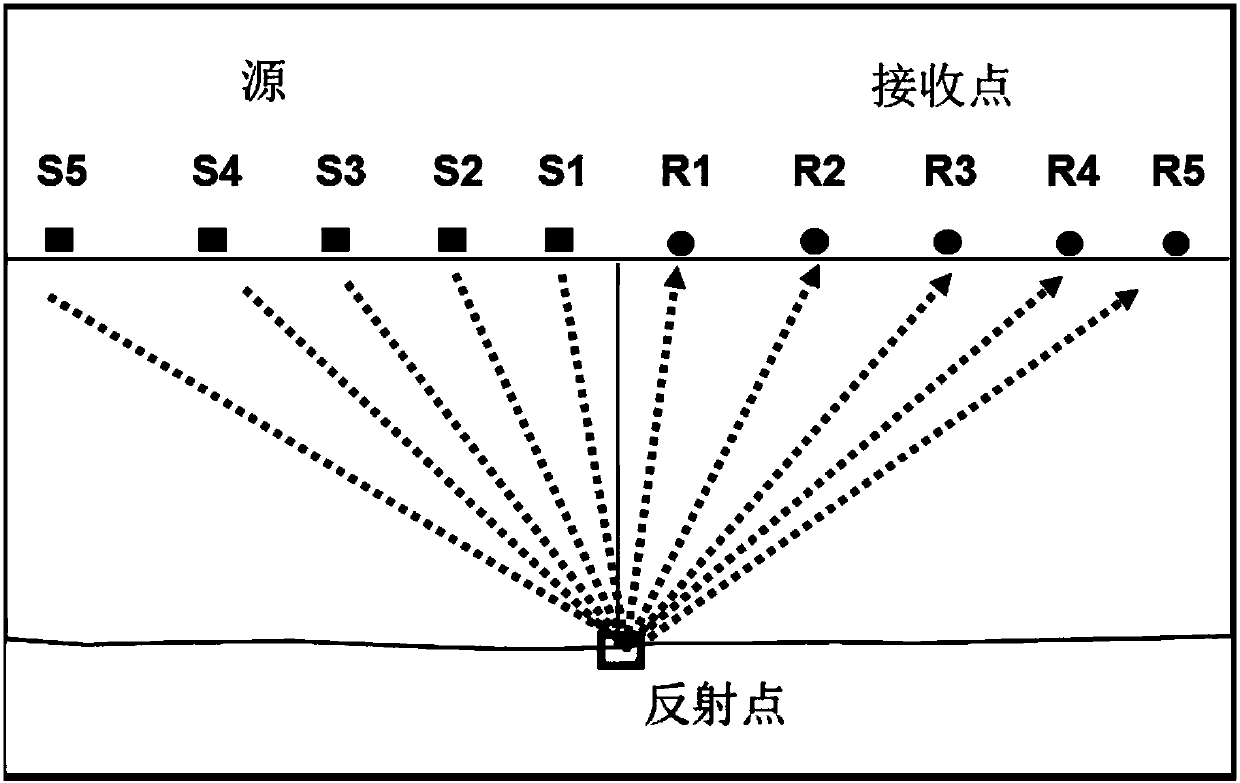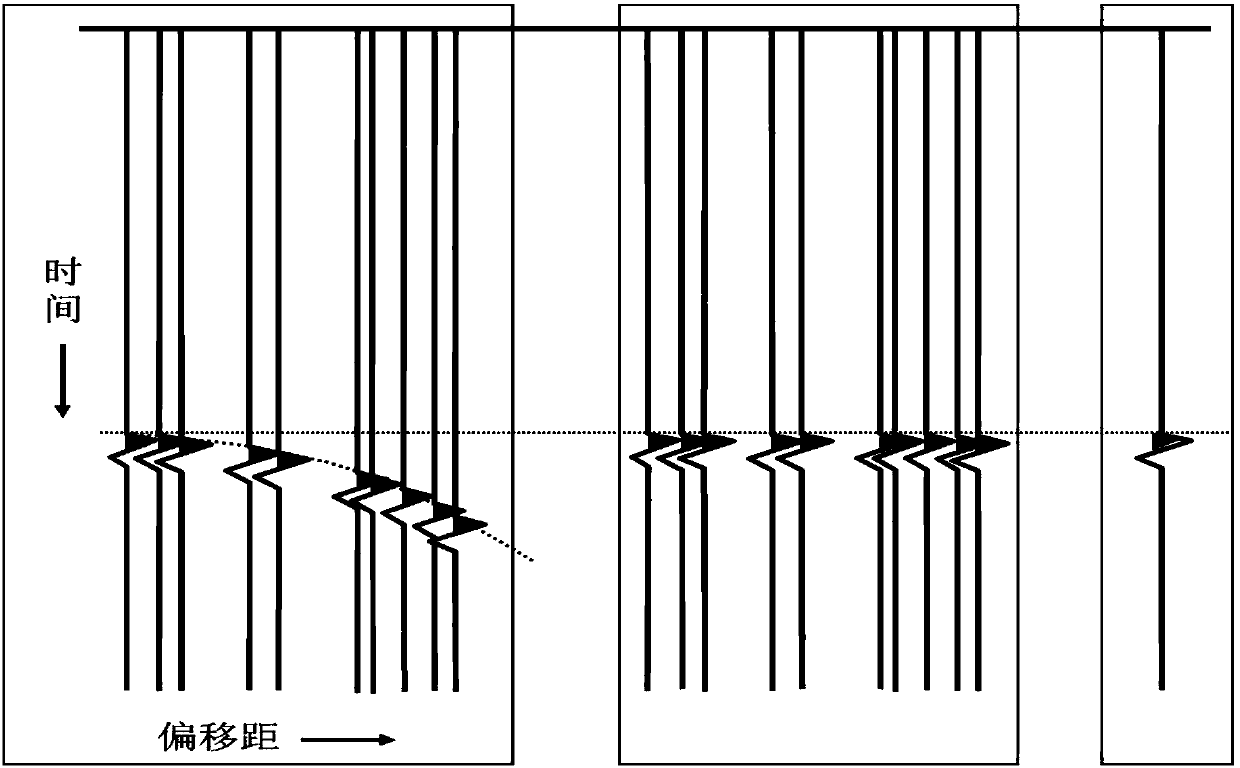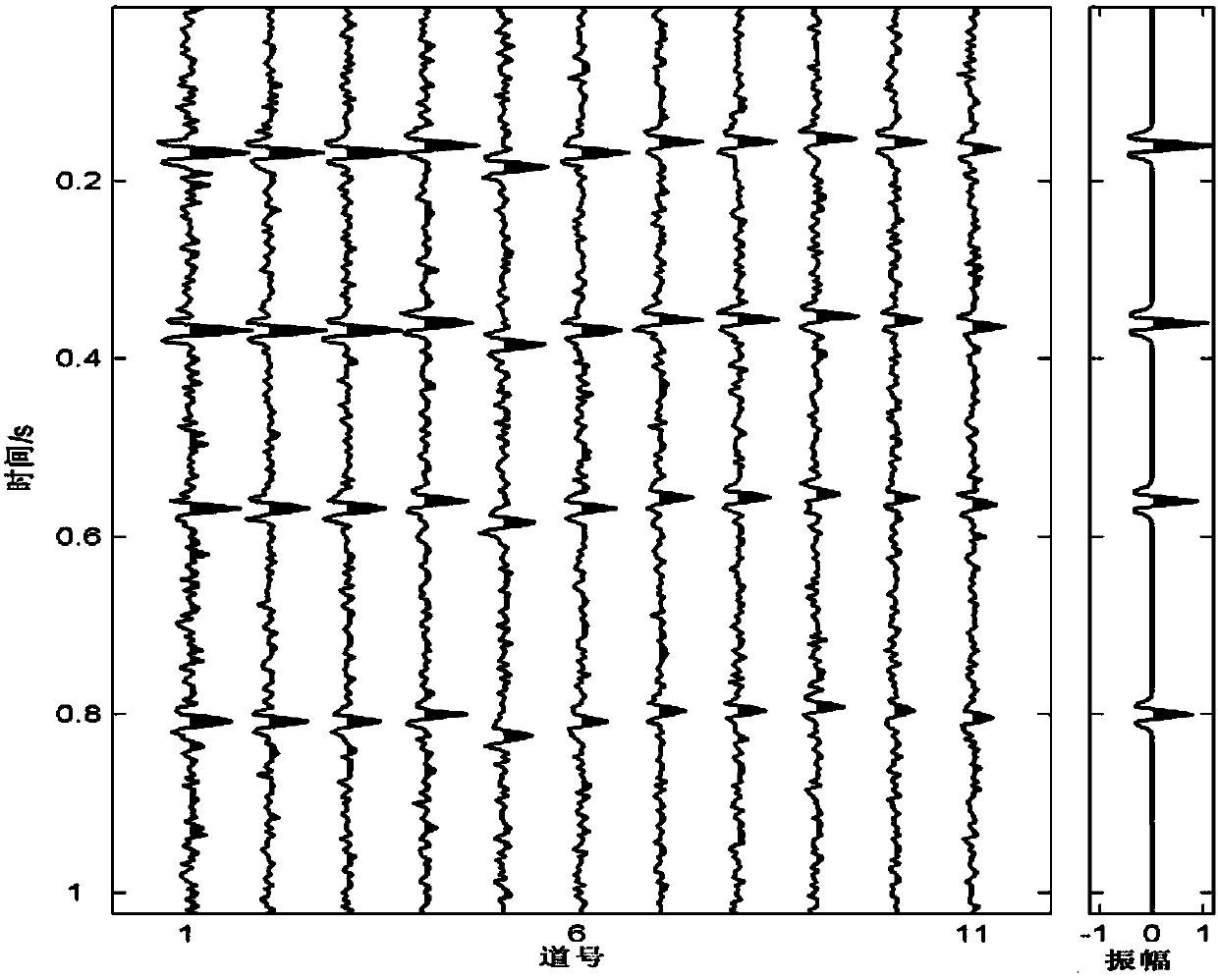A Time-Frequency Domain Seismic Data Processing Method Based on Weighted Stacking
A technology of seismic data and weighted superposition, applied in seismic signal processing, seismology, geophysical measurement, etc., can solve the problems of incomplete noise removal, submerged weak energy signals, etc., to improve the superposition effect and attenuate noise interference.
- Summary
- Abstract
- Description
- Claims
- Application Information
AI Technical Summary
Problems solved by technology
Method used
Image
Examples
Embodiment 1
[0074] This embodiment provides a time-frequency domain seismic data processing method based on weighted stacking, including the following steps:
[0075] Step 1) Transform the original seismic signal before stacking into the time-frequency transform domain formed by S transform, and extract the instantaneous phase in the time-frequency transform domain;
[0076] Step 2) constructing a weight function by subtracting its minimum value from the time-frequency plane formed by superimposing the instantaneous phase;
[0077] Step 3) Perform weighted superposition of the weight function, apply the superposition weight to perform S inverse transformation, obtain the superimposed seismic data, and output the superimposed seismic waveform.
[0078] The material basis of the present invention is the seismic data volume before stacking, which is processed by gathers. The core of seismic data stacking is horizontal stacking. Horizontal stacking is to averagely stack the signals received ...
Embodiment 2
[0081] This embodiment provides a time-frequency domain seismic data processing method based on weighted stacking, the specific steps are:
[0082] Step 1) Transform the original seismic signal before stacking into the time-frequency transform domain formed by S transform, and extract the instantaneous phase in the time-frequency transform domain;
[0083] The expression of S transformation is:
[0084]
[0085] Among them, x(t) is the single-channel signal to be analyzed; ST(τ,f) is the result of time-frequency transformation; g(τ-t,f) is the window function; t is the time position of the single-channel signal to be analyzed; τ is The time position of the time-frequency transformation result; f is the frequency; i is the imaginary number unit;
[0086] Assume that the single-channel signal to be analyzed is input x(t)=A(t)e iφ(t) , then the result of the S transformation is:
[0087]
[0088] Among them, A(t) and φ(t) are the amplitude and phase of the single-channel...
Embodiment 3
[0108] In this embodiment, the time-frequency domain phase weighted stacking method proposed by the present invention is compared with several existing weighted stacking algorithms through a synthetic seismic data before stacking.
[0109] image 3 The left side of the center shows a synthetic CMP gather, which contains 11 channels in total, each channel has 256 time sampling points, and the time sampling interval is 4 milliseconds. Each trace is a time-shifted and noise-added version of the reference trace shown on the right side of the figure, and the noise is additive white Gaussian noise. The reference trace is convolved by a reflection sequence with four reflection coefficients and a zero-phase Ricker wavelet with a main frequency of 40 Hz. The amplitudes of the four reflection coefficients in the reflection sequence are 1.2, 1.1, 0.9 and 0.8, respectively. Each track in the synthetic CMP gather is given a random moveout to simulate the phenomenon of incomplete moveout ...
PUM
 Login to View More
Login to View More Abstract
Description
Claims
Application Information
 Login to View More
Login to View More - R&D
- Intellectual Property
- Life Sciences
- Materials
- Tech Scout
- Unparalleled Data Quality
- Higher Quality Content
- 60% Fewer Hallucinations
Browse by: Latest US Patents, China's latest patents, Technical Efficacy Thesaurus, Application Domain, Technology Topic, Popular Technical Reports.
© 2025 PatSnap. All rights reserved.Legal|Privacy policy|Modern Slavery Act Transparency Statement|Sitemap|About US| Contact US: help@patsnap.com



